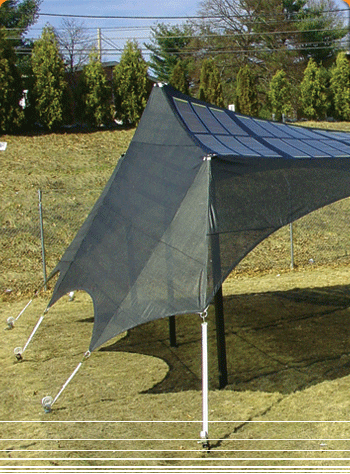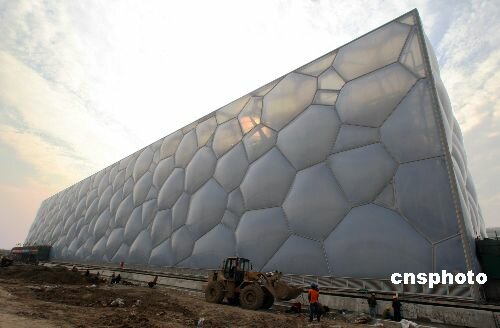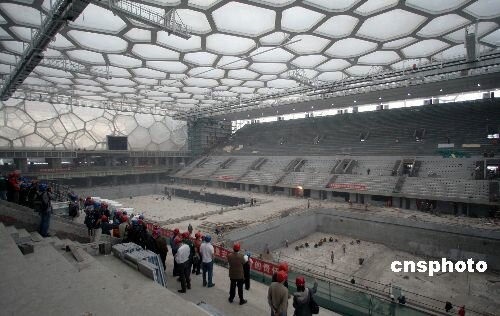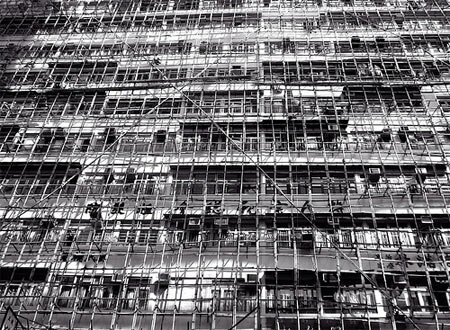ETFE: Material for an Architectural Revolution by Elizabeth Woyke. Businessweek, April 24, 2007
“Imagine a swimming arena made out of bubbles. Or a stadium knit from steel girders like a bird’s nest. Or even an enormous tent, proudly covering over a million square feet of space. A decade ago, such buildings might have existed only in the imagination. Today, they’re being built in Beijing as China’s new National Stadium and National Aquatics Center and as the Khan Shatyry Entertainment Center in Astana, Kazakhstan. All thanks to innovative architects, adroit engineers—and the unusual properties of the material called ETFE.
…
The material’s appeal is manifold, and those who work with it praise its unique properties. First, it’s extremely light—about 1/100 the weight of glass—and deceptively strong, able to stretch to three times its length without losing its elasticity. (Having said that, a sharp implement like a knife can puncture it—one reason it’s used mostly for roofs.)
If the film does tear, it can be patched with other pieces of ETFE. When exposed to fire, it softens and shrinks away from the heat, naturally venting smoke out of a building. And it’s naturally nonstick, nonporous surface, which has chemical properties similar to DuPont’s other best-selling material, Teflon, is so slick that dirt, snow, and rain simply slide off.
Shape Shifter
Its light weight reduces corresponding structural costs. Edward Peck, managing director of the North American Division of Foiltec, which now has 12 offices and 250 employees worldwide, estimates that a simple, small roofing project could be 10% cheaper if ETFE were used. For larger, more complicated projects, the overall construction savings could reach 60%.
Then there’s the fun factor. ETFE comes in different finishes (transparent, matte) and colors, and can be lit from within using LED lights or decorated with light projections like a giant movie screen. It can be printed with patterns by running it through a special press—something not possible with glass. It can take myriad shapes, too: Strips can be heat-welded together like fabric squares in a quilt. This “sewing” method enables ETFE to be installed in pieces much longer and wider than glass. A large glass panel might measure 10 ft. by 5 ft., whereas a strip of ETFE could be 180 feet long and 12 feet wide, with structural supports.
It also scores well on the environmentally friendly front, particularly crucial given the current call for greener building practices. The film is recyclable (simply melt and reuse), and due to its light weight, doesn’t require much energy to transport. The Watercube is designed to gather heat passing through its ETFE walls and roof—energy that can be used to heat the building’s water systems or expelled through vents if the building gets too hot….”




